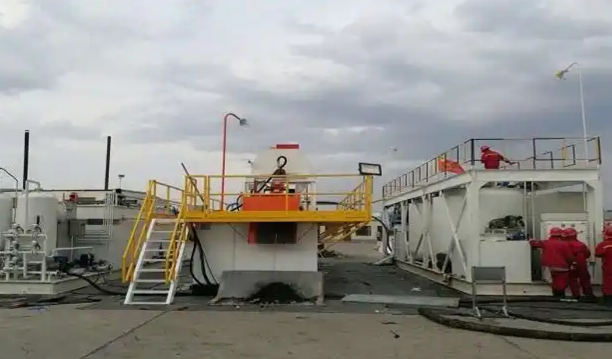The more common oilfield sludge treatment processes are: 1) incineration 2) biological method 3) solvent extraction 4) thermal desorption. In comparison with the four sludge treatment processes, each has its own advantages and disadvantages, and the specific selection is based on the different requirements and working conditions of the oilfield project.
Oilfield sludge refers to the sludge produced during the oil extraction, transportation, and refining process, and contains crude oil or certain components in crude oil. It is mainly divided into: ground sludge, tank cleaning sludge, flotation scum, etc. The sludge contains a large amount of toxic substances, such as benzene, phenols, anthracene and other foul-smelling and toxic components.

Comparison of 4 oilfield waste sludge treatment processes:
1) Oilfield waste sludge treatment process - incineration method: The sludge is first pre-treated by modulation and dehydration, and the concentrated sludge is then dehydrated and dried by the equipment, and then the mud cake is sent to the incinerator for incineration. The incinerated mud cake mainly contains 5%-10% oil, and the temperature is generally controlled at 800-1000℃. The advantages of the sludge incineration method are fast processing speed; high reduction degree; and more thorough treatment of harmful substances in the sludge. The disadvantages of the sludge incineration method include the complete loss of beneficial substances contained; high cost and high energy consumption; and the tendency of secondary pollution.
2) Oilfield waste sludge treatment process - biological method: The sludge with low oil content is subjected to three separation treatments, and some beneficial resources are recovered through microbial degradation treatment, thereby reducing the oil content of the sludge. The advantages of the sludge biological treatment method are energy saving and environmental protection, and low processing cost. Its disadvantages are large floor space and long processing cycle.
3) Thermal desorption method for treating oil field waste sludge: Thermal desorption sludge treatment method is a new high-temperature treatment method. Under high-temperature and oxygen-free conditions, the sludge is heated to a certain degree to desorb hydrocarbons and organic matter. This method is suitable for sludge with an oil content greater than 30%. The advantages of thermal desorption sludge treatment method are large-scale treatment, high economic benefits, and environmental protection. Its main disadvantages are complex operation and high technical requirements.
4) Oilfield sludge treatment process - extraction method: This method uses organic solvents to extract oil from sludge, so that oil, water and mud are completely separated. The advantage of sludge extraction method is that most petroleum substances can be recycled; the oil removal rate is high, which can reach more than 90%. The disadvantages of the extraction method are mainly reflected in the need for more processing equipment; too many processing procedures; more complicated processing technology; and too high investment costs.
There are many process methods for oilfield sludge treatment. The above 4 are currently the more popular sludge treatment processes in oilfields.

